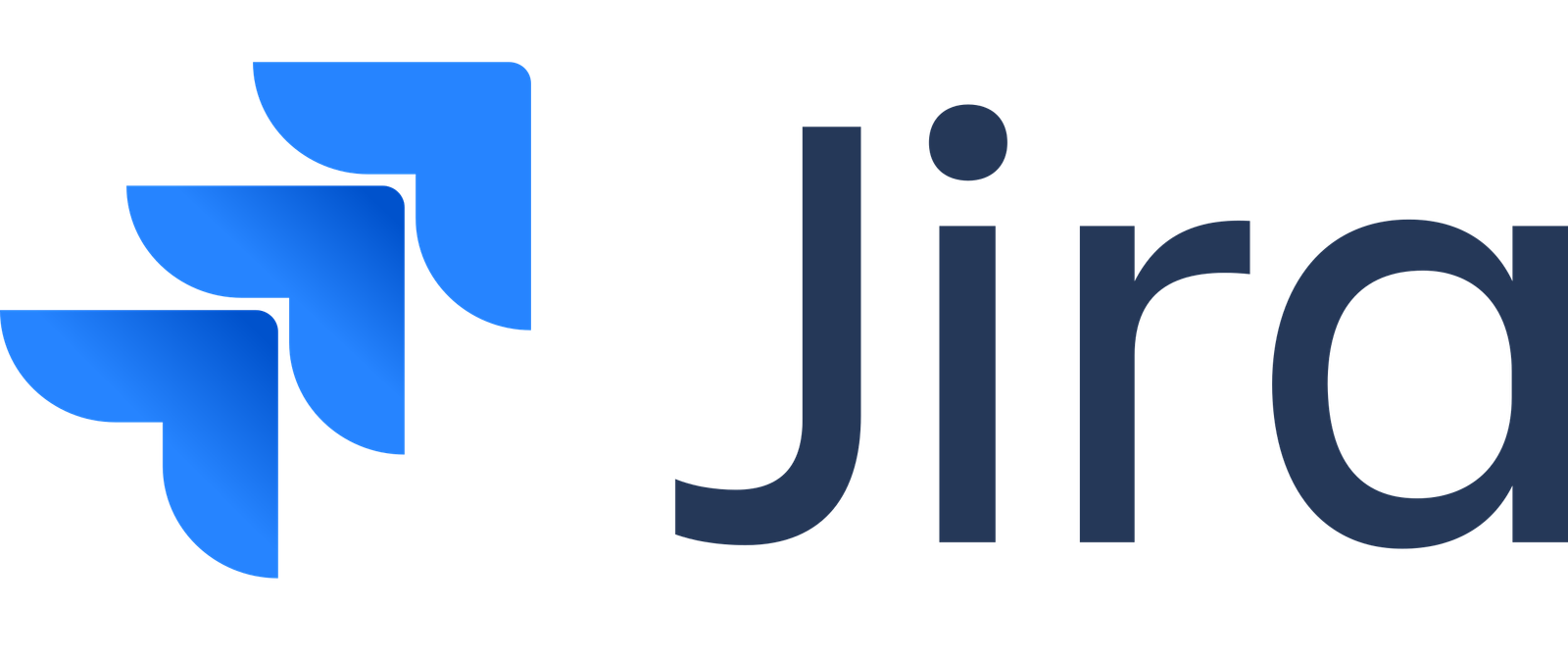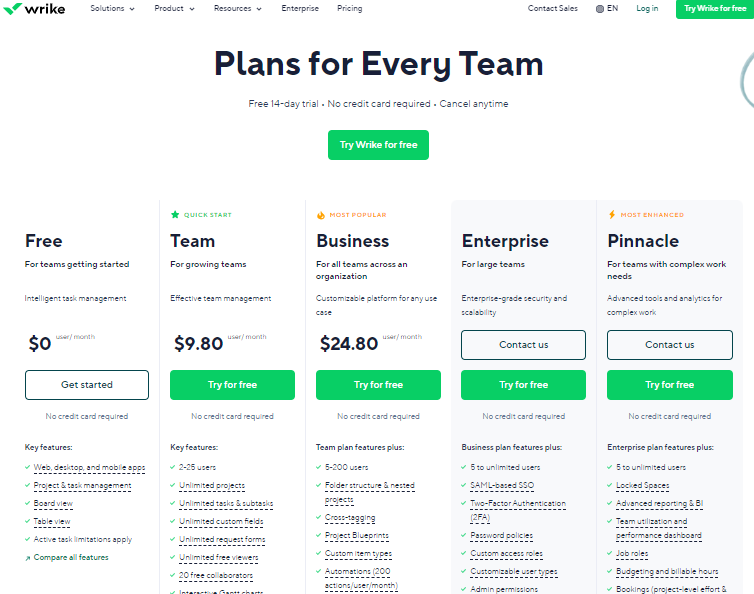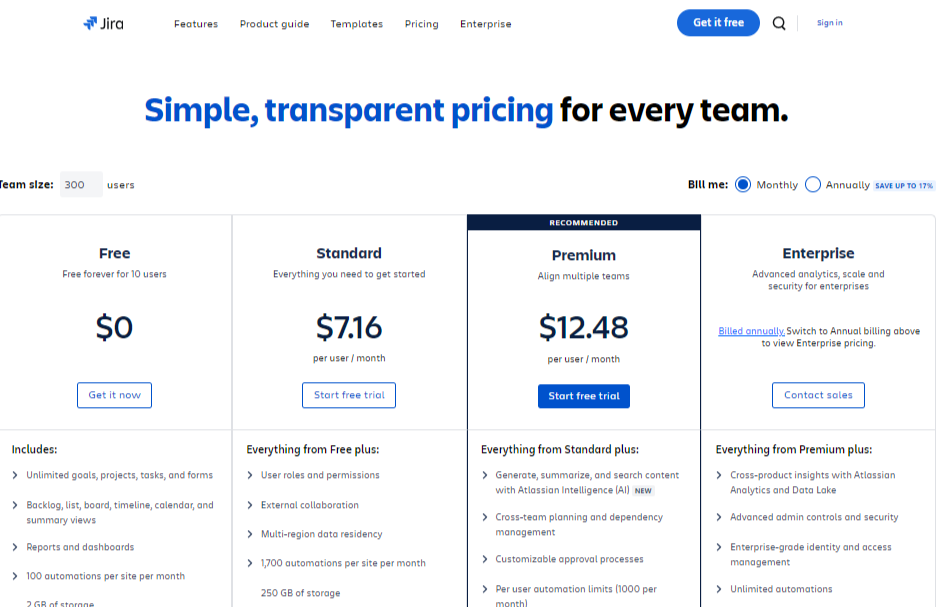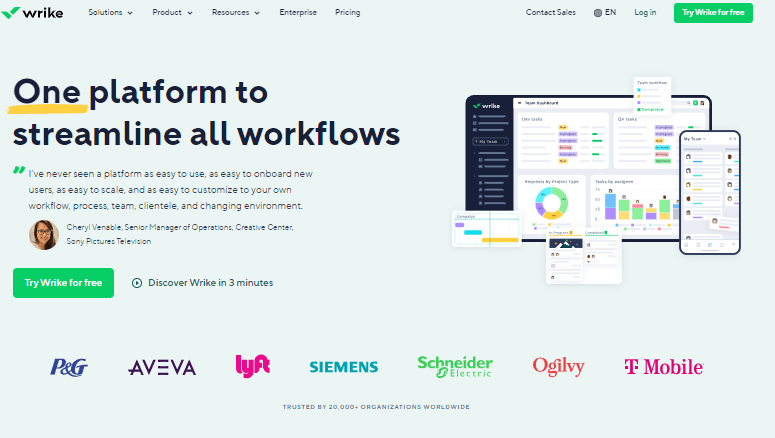
Considering Wrike vs Jira for your project management needs? Both platforms offer robust features, but they cater to different aspects of project management, such as specific projects, gantt charts, scrum, and software development. While Wrike focuses on collaboration, task management, and team communication, Jira is renowned for its advanced issue tracking, software development capabilities, and scrum.

- User-Friendly Interface: Wrike offers a clean and intuitive layout, making it easy for users to navigate and manage tasks without a steep learning curve.
- Customizable Dashboards: The platform allows users to create customizable dashboards, enabling personalized workflow management and real-time insights into project progress.
- Efficient Task Management: Wrike provides flexible task management options, including Kanban boards, Gantt charts, and calendars, making it easy to track tasks, set deadlines, and collaborate with team members.

- Robust Issue Tracking: Jira excels in issue tracking, offering advanced features like issue linking, sprint planning, and customizable workflows tailored to software development projects.
- Agile Reporting: The platform is renowned for its Agile reporting capabilities, providing teams with real-time insights into project progress.
- Extensive Customization: Jira offers extensive customization options for task workflows, issue types, and fields, allowing teams to adapt the platform to their specific project requirements and preferences.
In this comparison of project management software, we will delve into the key differences between Wrike and Jira, including scrum and task creation, to help project managers make an informed decision based on your specific requirements. From workflow customization to reporting tools, we will explore how each platform excels in various areas. Stay tuned to discover which project management tool, like scrum, aligns best with your team’s goals and workflow preferences in software development.
Here’s a comparison table for Wrike vs Jira:
| Feature | Wrike | Jira |
|---|---|---|
| Ease of Use | User-friendly with an intuitive interface | More complex, steeper learning curve |
| Task Management | Customizable dashboards, Kanban boards, Gantt charts | Agile boards, scrum boards, robust issue tracking |
| User Interface | Clean, clutter-free, easy to navigate | Extensive customization options, more complex |
| Task Tracking | Simple, easy to create tasks, set deadlines, and track progress | Advanced features like issue linking, sprint planning, and customizable workflows |
| Reporting Tools | Detailed and customized reports, real-time insights | Agile reporting, time-tracking reports |
| Support | Phone support, comprehensive help portal | Support ticket forms, community forums |
| Integration | Limited integration options with external tools | Seamless integration with various third-party applications |
| Flexibility in Task Management | Custom workflows, automation, set dependencies, collaborate seamlessly | Extensive customization for task workflows, issue types, and fields |
| Target Users | Larger teams, robust project management features | Small teams, focus on agile development, and issue tracking |
| Pricing | Flexible pricing per user, cost-effective for larger teams | More straightforward, suitable for small teams |
| Onboarding | Gentle learning curve, intuitive interface, free trial available | More complex setup, requires additional time to grasp |
| User Experience | Easy navigation, streamlined task creation, customizable dashboards | Advanced reporting, robust customization, initially overwhelming |
| Time Management | Clear overview of tasks and deadlines | Robust time reporting features, detailed project progress analysis |
| Final Verdict | Best for teams needing quick setup, ease of use, and flexibility | Best for organizations needing in-depth customization, detailed reporting, and agile support |
Comparing Forms and Functions
Task Management
Wrike and Jira both offer task management forms, but they differ in their approach. Wrike provides a user-friendly tool with customizable dashboards to plan, making it easy to track tasks and collaborate with team members. On the other hand, Jira is known for its robust features tailored towards software development projects, including agile boards and scrum boards.
Task Tracking Functions
Task tracking functions in Wrike focus on simplicity and ease of use. Users can create tasks, set deadlines, assign them to team members, and track progress effortlessly. In contrast, Jira’s task tracking functions are more intricate, offering advanced features like issue linking, sprint planning, and customizable workflows that cater specifically to the needs of software development teams.
User Interface Design
When it comes to user interface design, Wrike emphasizes a clean and intuitive layout. The platform is designed to enhance productivity by providing a clutter-free workspace where users can easily navigate between tasks, projects, and timelines. On the contrary, Jira’s interface is more complex due to its extensive customization options and diverse range of project management tools.
We Recommend 🏆
Start with a free trial to test Wrike’s functionality, compatibility, and overall fit for your team. Benefit from a gentle learning curve with Wrike’s intuitive design.
Overview of Key Features
Wrike Features
Elaborate Report Building System: Wrike stands out with its elaborate report building system that allows users to create detailed and customized reports to track progress efficiently. This feature enables teams to gain valuable insights and make data-driven decisions.
Flexibility in Task Management: Wrike offers a high level of flexibility in task management options, allowing users to customize workflows, assign tasks, set deadlines, and prioritize work based on individual needs. This ensures efficient task tracking and completion.
Jira Features
Agile Reporting: Jira is known for its Agile reporting capabilities, which are essential for Agile project management methodologies. It provides teams with real-time insights into project progress, sprint velocity, and team performance, enhancing overall project efficiency.
Time-Tracking Reports: Another key feature of Jira is its time-tracking reports, which help teams monitor time spent on tasks accurately. This feature is crucial for tracking project timelines, identifying bottlenecks, and optimizing team productivity.
Task Management Comparison
- Wrike: Offers a user-friendly interface with customizable task lists, Kanban boards, Gantt charts, and calendars for efficient task management.
- Jira: Provides robust task management features tailored to Agile methodologies, including backlog prioritization, sprint planning, and issue tracking.
Flexibility in Task Management Options
- Wrike: Allows users to create custom workflows, automate repetitive tasks, set dependencies between tasks, and collaborate seamlessly within the platform.
- Jira: Offers extensive customization options for task workflows, issue types, and fields to adapt to various project requirements and team preferences.

Target User Analysis
Ideal User Profile for Wrike
Wrike caters to larger teams and projects, offering robust features that enhance collaboration and project management. Its user-friendly interface makes it suitable for users seeking a comprehensive platform for task management. With customizable workflows and reporting tools, Wrike is ideal for custom project requirements.
- Suitable for larger teams
- Robust features for project management
Jira’s Target Users
Jira is tailored for small collaborative teams with under 10 members, focusing on agile development and issue tracking. Its flexibility allows users to adapt it to their specific project needs efficiently. Jira’s integration capabilities make it a go-to choice for teams looking to streamline their workflow.
- Tailored for small teams
- Focuses on agile development
Pricing Tiers Differentiation
Wrike offers pricing plans per user, making it cost-effective for larger teams with varying needs. The flexibility in pricing tiers allows users to scale their subscription based on the team size and required features. On the other hand, Jira’s pricing structure is more straightforward, with options suitable for small teams looking for essential project management tools.
- Cost-effective pricing per user
- Flexible subscription scaling
Feature Breakdown
Task Management Forms
Wrike offers various task management forms to cater to different project needs. Users can create tasks, subtasks, and milestones to organize work efficiently. The platform allows for categorizing tasks based on priority or project phase.
Kanban Boards
Jira excels in task management with its Kanban boards, enabling users to visualize workflow stages easily. Teams can move tasks across different columns representing task statuses, ensuring transparency and effective collaboration.

Gantt Timeline Charts
Jira’s Gantt timeline charts provide a comprehensive view of project timelines and dependencies. Users can track task durations, identify critical paths, and manage project schedules effectively. This feature enhances project planning and execution.
Reporting Capabilities
Wrike offers robust reporting capabilities, allowing users to generate detailed reports on project progress, team performance, and resource utilization. The platform provides customizable dashboards for real-time insights and informed decision-making.
Progress Measurement
Jira also provides advanced reporting tools for measuring project progress. Users can track key performance indicators (KPIs), monitor task completion rates, and analyze project metrics. This feature enables teams to evaluate project health and make data-driven decisions.
Support and Integration
Wrike Support System
Wrike offers phone support for its users, allowing direct communication with customer service representatives. This feature enables users to quickly resolve any issues they may encounter during their project management tasks. Wrike provides a comprehensive help portal where users can access a wide range of resources, including guides, FAQs, and tutorials. This self-service option empowers users to troubleshoot problems independently.
Jira Support Channels
Jira users can seek support through support ticket forms, where they can submit detailed descriptions of their issues. This method ensures that user concerns are documented systematically for efficient resolution. Furthermore, Jira boasts community forums where users can engage with fellow team members and experts to exchange knowledge, share best practices, and seek solutions collaboratively.
Differences in Support Availability
The availability of support channels differs between Wrike and Jira. While Wrike offers direct phone support for immediate assistance, Jira focuses on structured support ticket forms for issue reporting. Wrike’s emphasis on real-time communication through phone support caters to users who require instant resolutions. On the other hand, Jira’s utilization of community forums promotes a collaborative approach to problem-solving among users and experts within the platform.
Evaluating Ease of Use
User-Friendly Navigation
Wrike offers an intuitive user experience with its user-friendly navigation. Users can easily navigate through the platform, making it simple to create tasks, assign them to team members, and track progress. The dashboard layout is clean and organized, enhancing overall usability.
On the other hand, Jira has a steeper learning curve compared to Wrike. While it offers robust features for project management, its user interface may appear complex for new users. However, once users become familiar with the platform, they can leverage its extensive customization options for enhanced project tracking.
Accessibility and Intuitiveness
- Wrike
- Pros:
- Streamlined task creation process
- Clear visibility of project timelines
- Customizable dashboards for personalized workflow management
- Cons:
- Limited integration options with external tools
- Some advanced features require additional training
- Jira
- Pros:
- Extensive customization capabilities for project workflows
- Advanced reporting features for in-depth project analysis
- Seamless integration with various third-party applications
- Cons:
- Initial complexity in setting up projects and workflows
- Steeper learning curve for beginners
When comparing the accessibility of both platforms, Wrike stands out for its straightforward approach to task management. Its drag-and-drop functionality simplifies task assignment and collaboration among team members. In contrast, while Jira offers robust customization options, users may find it challenging to navigate through the platform initially.
In terms of intuitiveness, Wrike excels in providing a user-friendly interface that caters to both novice and experienced users. With its visually appealing design and easy-to-understand layout, users can quickly adapt to the platform’s functionalities. Conversely, Jira requires more time investment in learning the intricacies of its features, especially for those new to project management tools.
Pricing Insights
Wrike Pricing
Wrike offers a flexible pricing structure, with plans starting at $9.80/month per user for its basic features. As the number of users and advanced functionalities increase, the pricing tiers also adjust accordingly.
Comparison of Pricing Models
- Wrike: Known for its user-friendly interface and customizable features, Wrike caters to various user needs and team sizes. The pricing model ensures scalability without compromising on quality.
- Jira: On the other hand, Jira provides a more complex pricing structure, suitable for larger enterprises with specific project management requirements. The pricing reflects the extensive capabilities offered by the platform.

Affordability and Value Proposition
- Wrike: Despite its higher starting price compared to some competitors, Wrike’s value proposition lies in its intuitive design and diverse range of project management tools. This makes it a cost-effective solution for teams looking to streamline their workflows efficiently.
- Jira: While Jira may seem pricier initially, its robust features and integration capabilities justify the cost for organizations seeking a comprehensive project management solution. The platform’s detailed project reports and analytics add significant value for data-driven decision-making.
Starting Experience
Wrike Onboarding
New users of Wrike often find the platform’s learning curve to be gentle, thanks to its intuitive interface. The initial experience typically begins with signing up for a free trial. During the onboarding process, users are guided through setting up their workspace, tasks, and projects. The platform offers a free plan that allows users to explore its features before committing to a paid subscription.
Jira Setup
Jira, on the other hand, presents new users with a more complex setup process compared to Wrike. Upon starting with Jira, users are required to create projects, issues, and workflows. The platform offers various customization options that may initially overwhelm beginners. However, once users familiarize themselves with the interface, they can leverage Jira’s robust project management capabilities effectively.
User Interactions
In the early stages of using Wrike, new users appreciate the platform’s user-friendly design and straightforward task management features. The ability to collaborate seamlessly with team members and track project progress in real-time enhances the overall user experience. The availability of templates and automation tools simplifies project initiation and execution.
Conversely, Jira users often encounter a steeper learning curve due to its extensive customization options and project configurations. While this level of flexibility is beneficial for advanced users seeking tailored solutions, beginners may require additional time to grasp the platform’s full potential. Despite the initial challenges, users find Jira’s advanced reporting capabilities and issue tracking functionalities valuable for project management.
Comparison
When comparing the starting experiences of new users with Wrike and Jira, it is evident that Wrike offers a more user-friendly onboarding process with simpler navigation and task management features. In contrast, Jira provides a more customizable experience but requires a longer adjustment period due to its complexity. Ultimately, the choice between Wrike and Jira depends on the user’s preference for ease of use versus customization options in project management software.
Final Comparison
Features
Wrike offers flexible project management with a user-friendly interface, ideal for small to medium-sized teams. Jira, on the other hand, provides extensive customization options suitable for complex projects.
Pros and Cons of Wrike:
- Pros: Intuitive design, easy collaboration tools, and efficient task tracking.
- Cons: Limited reporting capabilities and lack of advanced automation features.
Pros and Cons of Jira:
- Pros: Robust issue tracking, advanced workflow management, and seamless integration with other tools.
- Cons: Steep learning curve for beginners and high pricing for small teams.
User Scenarios
For teams working on short-term projects with fast-changing requirements, Wrike might be the better choice due to its agility and quick setup process. In contrast, Jira suits larger enterprises with complex projects that require in-depth customization and detailed reporting capabilities.
Time Management
When it comes to managing due dates and tracking project timelines, Wrike excels in providing a clear overview of tasks and deadlines. On the other hand, Jira offers robust time reporting features that allow users to analyze project progress over time.
Winner
The choice between Wrike and Jira ultimately depends on the specific needs of your team. If you prioritize ease of use and quick implementation, Wrike is the way to go. However, for organizations requiring advanced customization and in-depth project analysis, Jira emerges as the winner.
Recommendation
For small to medium-sized teams looking for a straightforward project management solution, Wrike stands out for its simplicity and user-friendly interface. On the contrary, if your organization deals with complex projects that demand intricate workflows and detailed reporting, Jira is the recommended choice.
Final Remarks on Wrike vs Jira
You’ve explored the ins and outs of Wrike and Jira, comparing features, user experiences, and pricing. As you weigh your options, consider your team’s specific needs and preferences. Both platforms offer unique benefits, so choosing the right one depends on what aligns best with your workflow and goals.
Make an informed decision based on your team’s requirements. Whether you prioritize intuitive design, robust features, or seamless integration, selecting the ideal project management tool can enhance productivity and collaboration. Take the time to evaluate how each platform fits into your daily operations, and tailor your choice to optimize efficiency and success.
We Recommend 🏆
Start with a free trial to test Wrike’s functionality, compatibility, and overall fit for your team. Benefit from a gentle learning curve with Wrike’s intuitive design.

